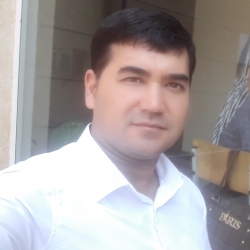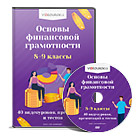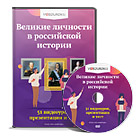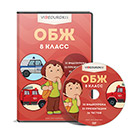IMPROVING THE METHODOLOGY OF GUIDEING STUDENTS TO MUSICAL CREATIVE ACTIVITY.
Annotation: This article talks about the subtle essence of art, art forms and art of our country. There is information about the artists of our country and the trends of their work.
Key words: artistic perception, aesthetic perception, emotional perception, mental perception, aesthetic education, art, modern perfect man, factors, means, fine arts, theater, television, cinema, literature, content and form, artistic perception, aesthetic perception, aesthetic cognition, artistic genre.
Introduction.In recent years, systematic work has been carried out to radically reform and improve the field of culture and arts, to create an effective system of state support for cultural and art institutions. The Decree of the President of the Republic of Uzbekistan PF-6000 "On measures to further enhance the role and influence of culture and art in society1" is the basis of our speech.
Peculiarities of aesthetic perception of a work of art. Art evokes not only the human being, but also everything that can be perceived, events and emotions. Although art does not directly reflect a person, it actively expresses a person's attitude to something, evaluates something by human criteria. In evaluation, however, there is always a state of cognition aimed at understanding human nature. Art seeks, finds, and uses meaning in things, in natural phenomena, that are important to man.
Art creates social meaning in any event of reality. The main theme of art and morality is man. When art reflects a person's goals, interests, thoughts, feelings, and inner experiences, morality permeates the core of human social relations and relationships. There is nothing that happens in life, in any society, that is not moral.
Human relationships and interactions are a direct object of morality. When we compare the types of poetry and the visual arts, we see that their themes are different, and that the characteristics of the subject come from the visual media.
The second direction is related to the richness of human emotions, cognitive abilities, and spiritual abilities. There is no contradiction between these two views, which are the source of art, but there are some differences.
While acknowledging the crucial role of reality in the formation of art forms, it is important to take into account, first of all, the characteristics of human perception and the properties of the material used by the artist. In many ways, material objects create the characteristics of the means of expression that are specific to a particular art form. In the process of aesthetic management of works of art, several types of art have emerged. Music is a culture of human emotion, fine arts are a culture of careful observation: open stage (variety) and circus arts are a culture of entertainment and spectacle.
During the practice of art, two of its characteristics - the tendency to separate and the tendency to converge - become apparent. While the emergence of new forms of art of separation is associated with their desire for independence, consolidation is seen in the pursuit of a mixture (synthesis) of art forms. These two tendencies are inherent in all periods of the development of human artistic thinking. But at one time or another, one of them was dominant and had a different content.
It is now customary to study art in spatial, temporal, and spatial-temporal forms.
Spatial representation includes fine arts, sculpture, line drawing (graphics), applied arts, and architecture; the temporal form includes fiction and music, and the spatial-temporal form includes theater and cinema. It has both pictorial and non-pictorial representations, depending on whether or not it reflects a clear picture of events. In fine arts and sculpture, scenes of life are expressed through the creation of emotional images of reality, while in literature and music, scenes of life are portrayed through the generalization of the flow of thoughts and emotions. For example, literature and music do not perceive the emotional image of a material body (object), but reflect reality through experience, emotions, and achieve a high level of image.
The "language" of literature and music can be "copied" from other forms of art. Fine art, on the other hand, uses only the symbol of expression to directly reflect the colorful, emotional-perceptual physical world. Expresses perceptions and emotions in reality through visual and expressive means such as color, light, light and shadow.
Art forms are also divided into different types in terms of perception; they are visual works and are called performing arts. These include works of fine art, sculpture, architecture, and art photography. We call music an art form that can be heard. Theatrical art is a form of entertainment. Depending on their social significance, the useful and practical tasks of art can be divided into two-task, one-task, applied and "pure" tasks. Architecture, applied arts, folk crafts, applied duties. In these arts, art is inextricably linked with useful-practical perception. For example, military music is the national anthem, or literature, the visual arts (flag, logo), the information documentary aspects of which are both visual and audible. The essence of aesthetic education is related to human deeds (ideals), and the person who possesses these deeds is distinguished from others by his delicate taste and pure feelings. It is known that a person is directly involved in this system, as well as participating in various aspects of social development. Ultimately, the person thus becomes an aesthetic subject of social development. Accordingly, we can say that no individual living in a society is excluded from aesthetic processes, but rather influences these processes to a greater or lesser extent by his or her own behavior.
The purpose of aesthetic education is to direct such influences on the basis of beauty, grandeur, aesthetics. Nowadays, the scope of aesthetic education is growing. Accordingly, aesthetic education has set itself many glorious tasks; to improve the ability of people not only to actively master works of art, works of art, but also to understand and appreciate their aesthetic essence; to show the creative potential of the members of the society and to inspire confidence in their ability to use them; to develop the ability to have a pure attitude to the social processes of nature and society and to work diligently for their development; to instill a sense of respect for our spiritual heritage of the past, to create a basis for the formation of feelings of national pride, national pride; developed all kinds of creativity and turned to the world and benefited them for the benefit of the nation.
In general, art is a historical system consisting of a set of different general and individual, specific methods of understanding the artistic image of the world. Art has a long history. It is related to the social development of people through the process of labor in the early stages of social development.
A singer who makes you happy, a musician who spreads sorrow, people who are emotional and people who are in pain are sacrificing their lives for both of them. The soul is nourished by the melody, and the soul is nourished by the melody. A sweet voice is a singer who sings skillfully, and doomsday rises among the people of pain. The more painful the music of each musician, the harder it is for the heart to beat. When an open-faced person sings in a pleasant voice, it emits smoke from the burning heart of a person in pain. The pleasant performance of an intelligent musician will charm even a troubled man (when Berta Davidova sings a prayer). In particular, if he plays and sings by himself, he will stir up the property of the soul (F. Umarov, O. Hayitova, K. Otaniyozov, M. Uzakov and others). Man is both perfect and harmful through art. A. Navoi gave a scientific analysis of the consequences of this in his work "Mahbul-ul-kulib". The skillful recitation of the Qur'anic verses influences the spirit of the believers in Islam and enchants them. Just as a skilled artist enchants the audience, so a teacher, a specialist, a doctor, and a professional need to attract the attention and attention of an amateur.
F. Umarov, who sang the song "Who is under eighteen", and Abror Hidoyatov, who played the role of "Othello" with his whole body, left an indelible mark on the Uzbek theatrical art. G.Jamilova (who skillfully played the role of Silver) was able to create a typical image of a gentle, tender, pure love of Uzbek girls. The mastery of artists such as Oysha Mavlonova and Yodgor Sadullayev, who played the role of Oybarchin in the Alpomish epic, is a living image of the fact that Uzbek culture is a developed country, and it will go down in history. In the works of A.Navoi "Mahbub-ul-qulub", Kaikovs "Qobusnoma", A.Jami "Jahonnoma" the rubai of our classical heritage are meaningfully described, it is always in harmony with life, the garden of past and present life. The fact that it is a bridge is a spiritual heritage of mankind.
If you don't love art, if you don't understand it, you can't imagine education, intelligence, culture. The ability to understand art is necessary not only for those who are directly involved in art, but for all working people in our society. An engineer who doesn't understand art is a bad engineer, an expert who doesn't understand art is not a well-formed specialist, not an unimaginative constructor, a scientist who doesn't feel music and doesn't understand the subtleties of poetry is like a person who steals his wealth . The development of science and industry imposes a great responsibility on specialists. One such task is to improve the skills of professionals. As a person improves the creation of material and spiritual wealth, he increases his skills and experience in all spheres of activity. Every professional needs to be a master at what he or she does to earn the respect of the people. This, in turn, requires a great deal of skill on the part of the specialist. A skill is a set of characteristics that enable each professional to organize his or her career at a high level. A skilled professional can do a lot of productive work in a short time with less effort.
In short, because man cannot live without material goods, he cannot live without spiritual riches. Therefore, man creates and perfects material and spiritual wealth through hard work. Because the desire to develop the tools of labor in science, art, etc., becomes a vital necessity and encourages it to serve its own interests. As he improves his wealth, he also improves his knowledge, experience and tools.
References:
-
Alisher Navoi. “Mahbub ul-qulub” Tashkent: Gafur Gulam Publishing House, - T., 2011, pp. 453-454
-
Charles Bato. The Concept of “Art”. Types And Art Genres. Art Functions
-
Daukeeva S. Philosophical music by Abu Nasra Muhammad al-Farabi. -Alma-Ata: Fond Soros - Kazakhstan, 2002.
-
Decree of the President of the Republic of Uzbekistan dated 26.05.2020 Decree PF-6000 "On measures to further enhance the role and influence of culture and art in society."
-
Matyoqubov O. Introduction to the basics of professional music in the oral tradition, -T .: Teacher, 1983.
1� Decree of the President of the Republic of Uzbekistan dated 26.05.2020 Decree PF-6000 "On measures to further enhance the role and influence of culture and art in society."

























